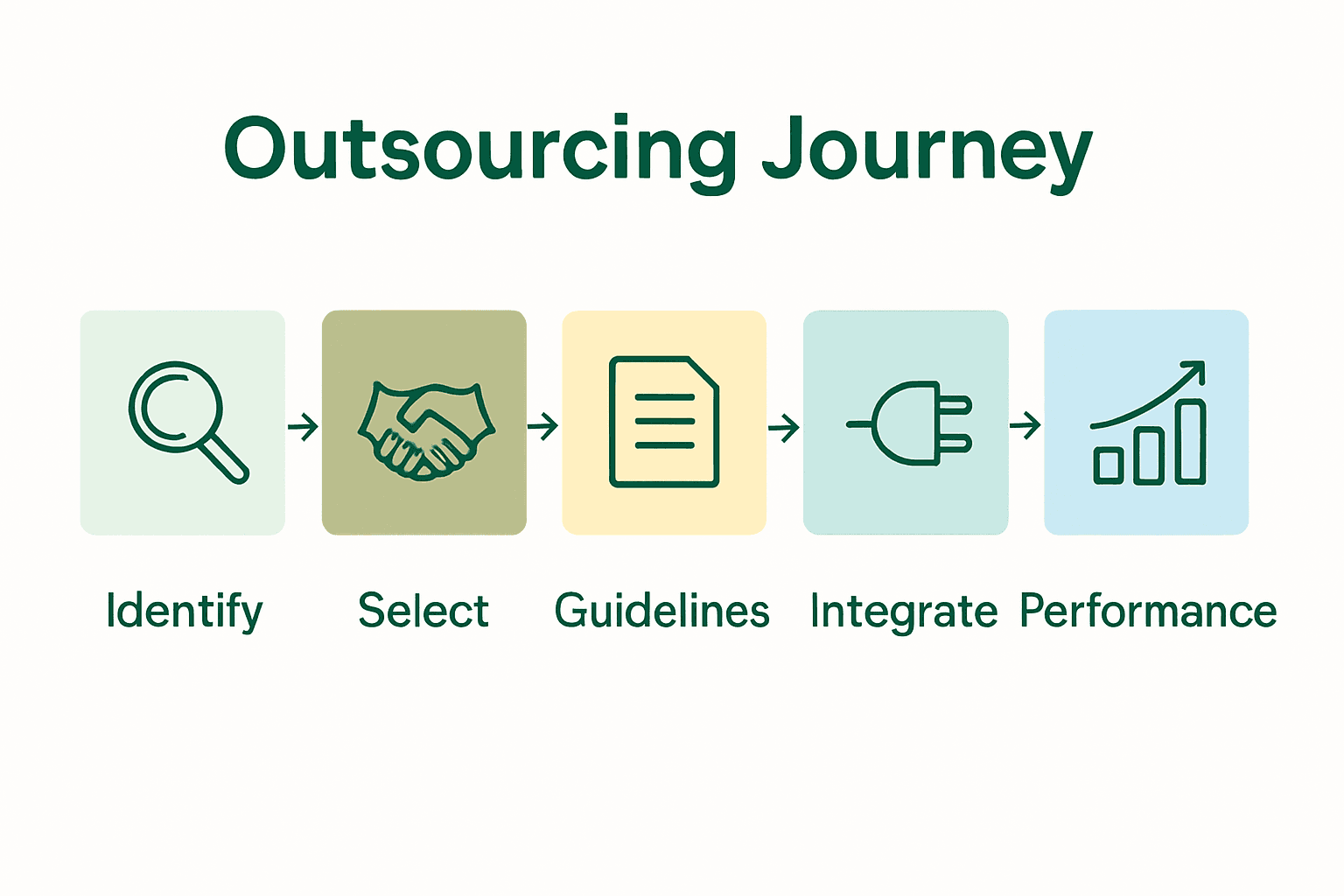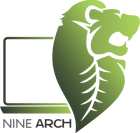Did you know that businesses can reclaim up to 30 percent of their workweek by outsourcing repetitive tasks? Time-consuming routines like data entry and scheduling often drain focus from bigger goals. By learning how to delegate these activities strategically, companies free up resources and raise their team’s productivity. Smart outsourcing helps you identify hidden inefficiencies, choose compatible partners, clarify task instructions, and maintain strong quality standards with remote teams.
Step 1: Identify and Prioritize Repetitive Business Tasks
Successfully outsourcing repetitive tasks begins with a strategic identification and prioritization process. This step helps you map out precisely which tasks drain your team’s productivity and are prime candidates for external delegation.
Start by conducting a comprehensive workflow audit across all departments. Track and document every routine task that consumes significant time and offers minimal strategic value. These often include data entry, scheduling, email management, report generation, and customer support screening.
To effectively identify these tasks, create a detailed task log tracking time spent on each activity. Look for patterns indicating repetitive work that follows standard procedures. Tasks that require consistent input but minimal creative decision making are ideal outsourcing candidates.

Prioritize tasks using a strategic matrix that evaluates three critical factors:
- Time consumption: How many hours are spent weekly on this task?
- Complexity: Does the task require specialized skills or can be standardized?
- Strategic impact: How much does this task directly contribute to core business objectives?
For tasks scoring high on time consumption and low on strategic impact, outsourcing becomes an immediate efficiency solution. Our guide to business process outsourcing success provides deeper insights into this evaluation process.
Warning: Not all repetitive tasks are equal. Carefully assess whether external teams can maintain your quality standards before delegating critical functions. Start with lower risk tasks to build confidence in your outsourcing strategy.
Next, you will learn how to select the right outsourcing partner who can seamlessly integrate with your existing workflows and deliver consistent results.
Step 2: Select Suitable Outsourcing Solutions and Partners
Choosing the right outsourcing partner can transform your business efficiency or become a costly mistake. This step focuses on finding a partner who not only meets your technical requirements but also aligns with your organizational culture and performance standards.
Begin by developing a comprehensive partner selection framework. This involves creating a detailed scorecard that evaluates potential outsourcing providers across multiple critical dimensions. Look beyond basic cost considerations to assess technological capabilities, industry experience, communication protocols, data security standards, and proven track record of delivering results.
Key evaluation criteria should include:
- Technical expertise matching your specific task requirements
- Proven performance metrics and client testimonials
- Data security and confidentiality protocols
- Scalability and flexibility of their service offerings
- Cultural compatibility and communication effectiveness
Conducting thorough due diligence means requesting comprehensive proposals, scheduling detailed discovery calls, and potentially initiating small pilot projects. Learn more about our essential outsourcing best practices to refine your selection approach.
Careful vendor assessment goes beyond surface level review.
Request specific case studies demonstrating successful implementations similar to your project scope. Ask about their quality control mechanisms, employee training processes, and technological infrastructure.
Warning: Avoid making decisions purely based on cost. The cheapest solution often carries hidden risks like poor quality, communication barriers, or unexpected additional expenses.
Next, you will explore how to design a robust onboarding and integration strategy to ensure smooth collaboration with your selected outsourcing partner.
Step 3: Develop Clear Task Guidelines and Documentation
Successful outsourcing hinges on crystal clear communication and meticulously crafted task documentation. This critical step transforms abstract expectations into precise operational instructions that external teams can seamlessly execute.
Begin by creating comprehensive task guidelines that leave zero room for misinterpretation. Each task description should include explicit details including expected output quality, specific workflow steps, required tools or platforms, formatting preferences, and acceptable performance benchmarks.
Structure your documentation using a standardized template that covers:
- Task objective and expected outcomes
- Detailed step by step procedural instructions
- Quality control checkpoints
- Relevant access credentials or system permissions
- Submission format and reporting requirements
- Estimated time allocation for each task
Understand more about business process outsourcing strategies to refine your documentation approach. The goal is creating guidelines so precise that any trained professional can complete the task without requiring constant clarification.
Develop visual workflow diagrams and screen capture tutorials when possible. These supplementary resources dramatically reduce communication barriers and provide clear visual references for complex processes.
Warning: Ambiguous documentation leads to inconsistent results. Invest time upfront in creating granular instructions to prevent costly misunderstandings and rework.
Next, you will learn how to establish robust communication channels and performance monitoring mechanisms to ensure ongoing success with your outsourced team.
Step 4: Integrate Remote Teams Into Existing Workflows
Successfully integrating remote teams requires strategic planning and thoughtful technological infrastructure. This crucial step transforms external resources into seamless extensions of your existing organizational ecosystem.
Start by mapping your current workflow processes and identifying precise integration points where remote teams can plug directly into your operational framework. This means selecting collaboration tools that offer real time synchronization and transparent communication channels.
Key integration strategies include:
- Implementing centralized project management platforms
- Establishing standardized communication protocols
- Creating shared digital workspaces
- Setting up automated task tracking systems
- Developing clear escalation and feedback mechanisms
Explore why business owners choose strategic outsourcing approaches to understand deeper integration techniques. The goal is creating a unified workflow where remote teams feel like natural organizational extensions rather than disconnected external resources.
Technology plays a critical role in smooth integration. Select cloud based platforms that allow simultaneous access secure data sharing and comprehensive performance tracking. Tools with robust permission management ensure sensitive information remains protected while enabling collaborative productivity.
Warning: Avoid treating remote teams as completely separate entities. Invest time in virtual team building activities and regular interactive sessions to build cohesion and mutual understanding.
Next, you will discover how to monitor performance metrics and maintain consistent quality across your newly integrated outsourced teams.
Step 5: Monitor Performance and Ensure Quality Standards
Establishing a robust performance monitoring framework is the cornerstone of successful outsourcing. This critical step transforms your initial collaboration into a data driven continuous improvement process that maintains exceptional quality and productivity.
Develop a comprehensive performance tracking system that goes beyond simple metric tracking. Create a multi dimensional assessment framework that evaluates quantitative outputs and qualitative performance attributes. This means establishing clear key performance indicators that measure not just task completion but overall work quality precision and alignment with organizational standards.
Key monitoring elements should include:
- Quantitative performance metrics
- Error rate and quality assessment
- Turnaround time and efficiency tracking
- Compliance with established guidelines
- Consistent output quality evaluation
Discover essential outsourcing best practices to refine your performance monitoring approach. Regular structured feedback sessions become critical in maintaining ongoing performance alignment and addressing potential improvement areas proactively.
Implement automated tracking tools that provide real time performance insights. These technological solutions enable continuous monitoring without creating excessive administrative overhead. Utilize dashboards that offer visual representations of team performance allowing quick identification of trends strengths and potential improvement areas.
Warning: Avoid micromanagement. Focus on outcome based monitoring that provides constructive feedback and creates opportunities for skill enhancement rather than punitive evaluation.
Next, you will explore strategies for maintaining long term partnerships and scaling your outsourcing initiatives effectively.
Here’s a summary of the five essential steps in the outsourcing process:
| Step | Key Actions | Main Goal |
|---|---|---|
| 1. Identify & Prioritize | Workflow audit Task logging Use prioritization matrix | Pinpoint tasks ideal for outsourcing |
| 2. Select Partners | Develop selection framework Review vendors Assess compatibility | Choose a reliable outsourcing provider |
| 3. Document Guidelines | Create clear instructions Design templates Add visual aids | Ensure task clarity for external teams |
| 4. Integrate Teams | Map workflow Implement tools Standardize communication | Seamlessly connect remote and in-house teams |
| 5. Performance & Quality | Set KPIs Regular monitoring Give feedback | Maintain ongoing quality and efficiency |
 |
|
Unlock Seamless Efficiency by Outsourcing Your Repetitive Tasks
Feeling overwhelmed by time-consuming routine work that pulls your team away from strategic goals? The guide on outsourcing repetitive tasks highlights how mismanaged workflows and unclear communication stall growth. It shows the urgent need to identify task priorities, select trusted partners, and ensure quality standards—challenges that can leave businesses frustrated and resources wasted.
NineArchs LLC specializes in transforming these pain points into opportunities for scalable growth. Our business process outsourcing solutions deliver professional, reliable, and cost-efficient remote workforce services tailored to your unique needs. From virtual assistance to data entry and custom software development, we help integrate remote teams seamlessly into your operations ensuring clarity, quality, and continuous performance monitoring. Learn how our expertise supports your outsourcing journey in depth by visiting our outsourcing best practices overview.

Take control of your operational efficiency today by partnering with NineArchs and watch your business refocus on what matters most. Explore how we bring precision and innovation to outsourcing at NineArchs LLC and start accelerating your success now.
Frequently Asked Questions
How do I identify repetitive tasks suitable for outsourcing?
Begin by conducting a workflow audit across your departments to document tasks that consume significant time and offer minimal strategic value. Track the time spent on each task to pinpoint the most time-intensive but low-impact activities, such as data entry or email management.
What criteria should I use to select an outsourcing partner?
Evaluate potential partners based on their technical expertise, proven performance metrics, data security standards, and cultural compatibility with your organization. Create a detailed scorecard to systematically compare providers according to these critical dimensions to ensure you choose a provider that aligns with your needs.
How can I create clear task guidelines for outsourced teams?
Develop comprehensive task documentation that includes explicit details such as expected output quality, step-by-step instructions, and quality control checkpoints. Using a standardized template can help ensure that any trained professional can execute the task with minimal clarification needed.
What tools can help integrate remote teams into my existing workflows?
Implement centralized project management platforms and standardized communication protocols to facilitate effective collaboration between in-house and remote teams. These tools should allow for real-time synchronization and tracking to ensure a seamless workflow integration.
How should I monitor the performance of outsourced tasks?
Establish a performance tracking system that evaluates both quantitative metrics, like error rate, and qualitative attributes, such as compliance with guidelines. Regularly review these metrics and provide structured feedback to maintain quality and efficiency over time.
What actions can I take to ensure ongoing quality with my outsourcing initiatives?
Focus on outcome-based monitoring rather than micromanagement, allowing for constructive feedback and skill enhancement opportunities. Aim to conduct regular reviews and feedback sessions to address any performance gaps and celebrate successes, improving overall quality consistently.










[…] Outsource Repetitive Tasks Guide for Seamless Efficiency | NineArchs […]
[…] Outsource Repetitive Tasks Guide for Seamless Efficiency | NineArchs […]
[…] Outsource Repetitive Tasks Guide for Seamless Efficiency | NineArchs […]
[…] Outsource Repetitive Tasks Guide for Seamless Efficiency | NineArchs […]
[…] Outsource Repetitive Tasks Guide for Seamless Efficiency | NineArchs […]